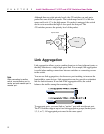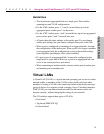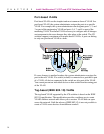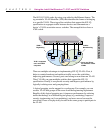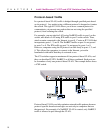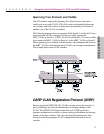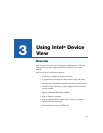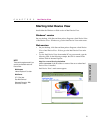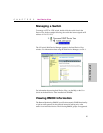
18
CHAPTER 2
Intel
®
NetStructure™ 470T and 470F Switches User Guide
GARP (Generic Attribute Registration Protocol) is defined by the IEEE
802.1D (1998 Edition) specification and is the mechanism used by switches
and end nodes (servers, PCs, and so on) to propagate configuration across the
network domain. GVRP uses GARP as a foundation to propagate VLAN
configuration to other switches. Devices that support GVRP transmit their
updates to a known multicast address that all GVRP-capable devices monitor
for information updates.
Sending GVRP messages between switches accomplishes the following tasks:
• Dynamically adds or removes a port from participating in a VLAN
• Sends updates about the switch’s own VLAN configuration to neighboring
GVRP-capable devices.
• Integrates dynamic and static VLAN configurations within the same
switch. For devices that don’t support GVRP, static VLAN configurations
are created by the user on the switch.
When the switch is running 802.1Q VLANs, Spanning Tree Protocol is
enabled for GVRP to work properly.
Internet Group Management Protocol (IGMP)
Normally, multicast traffic is broadcast by the switch to all ports. For
multicast traffic based on TCP/IP using the IGMP protocol, the switch can
optimize the broadcasting of multicast traffic by forwarding multicast traffic
only to ports that require it.
IGMP Snooping is a feature that allows the switch to forward multicast traffic
intelligently. The switch “snoops” the IGMP query and report messages and
forwards traffic only to the ports that request the multicast traffic. This
prevents the switch from broadcasting the traffic to all ports and possibly
affecting network performance.
IGMP Snooping requires a router that detects multicast groups on its subnets
and keeps track of group membership.
Note
Dynamically created VLANs are
not saved in the switch’s
memory. If the device sending out
the GVRP updates is removed,
the dynamic VLAN is removed.





